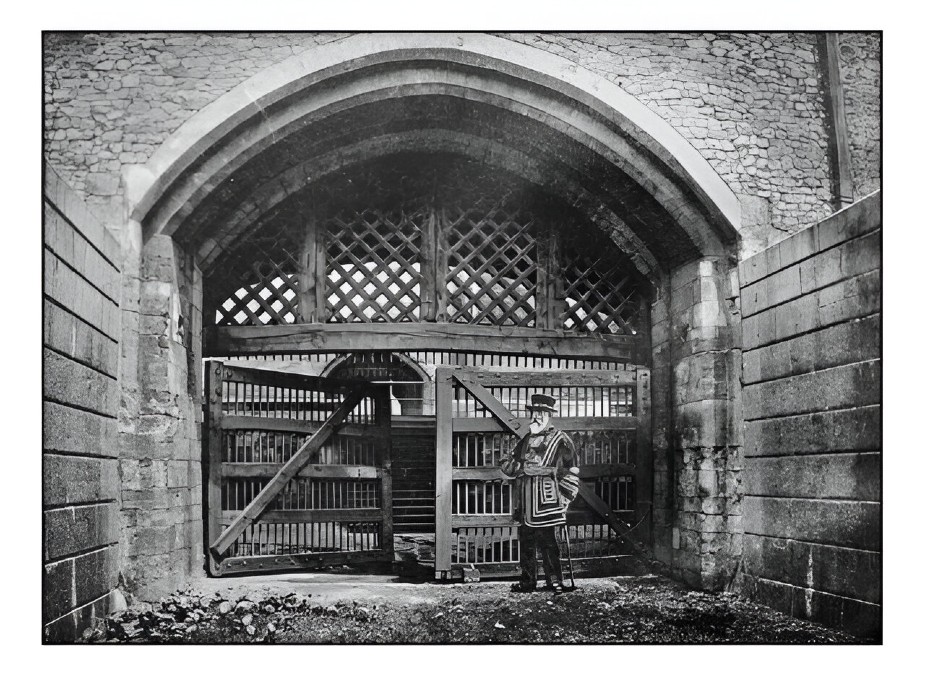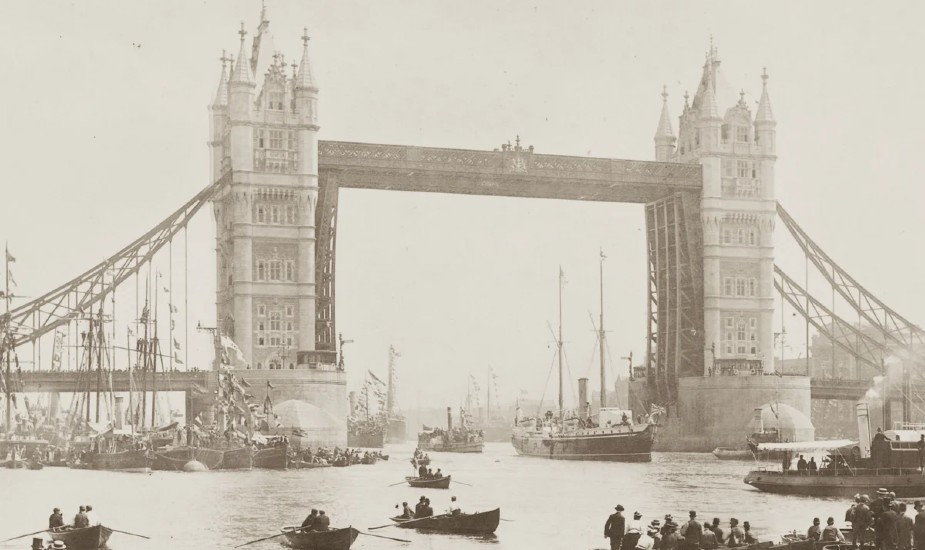Unlock the secrets and delve deep into the rich and rollercoaster history of Tower of London!
Step back in time and embark on an adventure into London’s dark and blood-soaked history, which reflects in the Tower of London history.
Brace yourself for an unforgettable journey through tales of luxury and infamy as you explore the sad history of Tower of London—where intrigue, torture, and imprisonment once reigned.
Before you stroll inside this historic castle’s walls, get a sneak peek by learning a few interesting Tower of London facts.
Are you prepared to face the chilling truths that lie within? These essential facts or history of Tower of London will also help you understand the significance of this historic place.
Discover the Tower’s captivating past and delve into London’s enigmatic history like never before by purchasing Tower of London tickets!
You will learn when was the Tower of London built. Who built the Tower of London? Why was the Tower of London built? Who was executed at the Tower of London in 1941?
Along with this, dive into the history of Tower Bridge London that runs parallel to the Tower of London History.
So, let’s jump in and learn about the Tower of London’s brief history and the history of London Tower Bridge.
History of Tower of London: The Tower’s Beginnings
To trace the Tower of London history, let’s learn when the Tower of London was built and why was the Tower of London built.
This iconic fortress, standing tall on the banks of the River Thames, has seen centuries of intrigue, power struggles, and royal drama. Let’s check it out:
The Tower of London is a Norman Marvel, and its story begins in 1066.
That year, William the Conqueror defeated King Harold at the Battle of Hastings. He soon ascended the English throne.
He built this tower, displaying his strength. For years, the Tower of London dominated London’s skyline and the hearts and minds of defeated Londoners.
The White Tower, a massive stronghold, became the nucleus around which the Tower of London was built, serving both as a royal residence and a symbol of Norman military might.
However, throughout the Tower of London’s history, its intended aim changed drastically from what was the Tower of London built for.
For instance, it was used as a prison in the Tower of London Castle history. You will learn more about the Tower of London prison history on your tour.
The fortress has witnessed its fair share of royal tragedies and deaths throughout the centuries:
In 1471, during the Wars of the Roses, King Henry VI met a tragic end within these walls.
The Princes in the Tower, the children of his rival Edward IV, mysteriously disappeared in 1483, and their skeletons were later found here in 1674.
The Tower of London became the nation’s most significant state jail during the Tudor era.
The Chapel within the Tower holds a somber distinction as the final resting place of some of its most famous prisoners.
Among those laid to rest are three English queens executed during the 16th century: Anne Boleyn, Catherine Howard, and Jane Grey.
Their stories and many others offer a glimpse into England’s turbulent and sometimes gruesome past.
The Tower of London’s history is as dynamic and complex as its roles over the centuries.
As you explore its corridors and ramparts, tales of England’s buried past will make your visit unforgettable. It will allow a deeper understanding of the Tower of London.
Ravens Tower of London history

The Ravens Tower of London history constitutes many Myths and Legends.
Exploring the Tower of London history would only be complete with encountering its mystical guardians, the ravens.
According to an age-old legend, Charles II insisted on protecting the ravens. He warned that the Crown and the kingdom would fall if the ravens ever left the Tower.
To this day, the Yeoman Ravenmaster ensures their presence. It’s a position steeped in tradition and folklore.
Tower of London Moat history
The Tower of London Moat is known as the Outer Ward.
The Tower of London moat history is also fascinating and dates back to the fortress’s early construction in the 11th century.
The moat was essential to its defensive design when William built the Tower of London.
It provided an additional layer of protection against potential attackers.
The moat controlled access to the Tower. Being a deep and wide water-filled ditch, the moat made it challenging for invaders to breach the Tower’s defenses.
Over the centuries, its function has evolved.
In the early years, the moat was a working waterway.
It allowed ships to dock at the Tower and facilitated the delivery of supplies and prisoners.
In the 19th century, the moat was drained and filled with earth as part of renovations and changes to the Tower’s appearance.
This decision aimed to create a more picturesque and visitor-friendly environment, transforming the area into the grassy space we see today.
However, to roam inside the walls and check out the interior of Tower of London, you must know how to get to the Tower of London and the appropriate tour duration.
Need help with the location of all these places? Keep a Tower of London Map nearby!
Tower of London Prison’s history

Let’s look into London Tower’s dual roles over the centuries and learn more about the fascinating Tower of London Prison history.
At one point in the history of London Tower, it held myriad historical figures.
Notorious names like Anne Boleyn, the second wife of Henry VIII, and Lady Jane Grey, England’s nine-day queen, were held captive within these ancient walls.
The Tower’s reputation as a prison became a potent tool for the monarchy to assert control and suppress dissent.
You can take a guided tour to learn more about the Tower of London Prison history.
St. Peter ad Vincula Burials
The St. Peter ad Vincula burials closely relate to the Tower of London Prison history. The chapel of St. Peter ad Vincula was completed in 1520.
However, more than the structure, the St. Peter ad Vincula burials are famous for being the resting ground for many of the famous prisoners of the tower.
For instance, the two wives of King Henry VIII, Anne Boleyn and Catherine Howard, are buried in this famous St. Peter ad Vincula burials.
Lady Jane Grey, the Queen of England for 9 days in 1533, is also buried among numerous other ‘traitors’ in the St. Peter ad Vincula burials.
On your visit, remember to check out the St. Peter ad Vincula burials, a sight famous for a dreadful part of Tower of London history.
Tales of Executions and Tower of London Ghosts:
The Tower of London’s dark history is rife with tales of executions and ghost sightings.
The tragic fate of figures like Anne Boleyn, beheaded on charges of adultery and treason, stirs emotions to date.
Eerie accounts of ghostly apparitions add an extra mystique, with reported sightings of spectral figures wandering the corridors, echoing the Tower’s haunting past.
Want to go on a ghost hunt? Well, the Tower of London is your oasis! Buy Tickets.
These are just a few things; there are plenty more to learn about the Tower of London History on your tour.
However, if you want the best possible experience, learn about the best time to visit the Tower of London.
Now, let’s jump into the history of Tower Bridge in London.
Stepping into the Tower of London is like entering a time capsule, allowing visitors to connect with the pulse of history.
Every aspect of this majestic fortress has a story, from the iconic beefeaters and the ravens to the awe-inspiring Crown Jewels.
History of Tower of London Bridge

Alongside the Tower of London history, the history of London Tower Bridge is also relevant to the visitors.
The history of Tower Bridge London should be taken in parallel to understand the connection between these two structures.
The history of Tower Bridge in London goes back to the 19th century. London’s population was rapidly growing, and the existing river crossings were becoming congested.
The Pool of London, the stretch of the River Thames between London Bridge and the Tower of London, was a busy waterway with tall-masted ships making navigation challenging.
Today, Tower Bridge symbolizes London’s engineering and architectural prowess and is essential to the city’s history and cultural heritage.
It continues to be one of London’s most famous and beloved landmarks, attracting millions of visitors worldwide yearly.
Tower Bridge is also popular due to the presence of the Tower of London nearby, which stands as a living monument, allowing visitors to absorb the grandeur of England’s past through exhibitions, reenactments, and captivating guided tours.
Visitors are highly recommended to check out the bridge to get a true sense of the history of Tower Bridge London.
So, let’s submerge in the buried past of the London Tower for its better appreciation today.
Do you know the difference between Tower Bridge and London Tower? Yep, they are different.
Find out which is better.
FAQ
1. Why was the Tower of London Built?
The tale behind why the Tower of London was built fascinates Britons today. William, the conqueror, built the Tower of London to legitimize the Norman conquest of England. It symbolized oppression and dominance inflicted upon London by the new Norman ruling class. You must read the Tower of London history to know in detail.
2. Who built the London Tower?
The foundation for the Tower of London was laid in 1066. However, the White Tower, which is the main keep, was built by William the Conqueror in 1078. As with its expansion and later construction, the Tower of London history also grew. For instance, the wall built around the Castle was ordered by King William II. Similarly, under the reign of Kings Henry III and Edward I, the Castle extended significantly, resembling what it is today.
3. Who built the Tower of London in 1066?
The Tower of London was built in 1066 by William the Conqueror as a part of the Norman Conquest. The White Tower, the main Keep, was built in 1078 to symbolize royal power, a sight of fear and awe. The Entire Castle gets its name from the White Tower, which served as a royal residence early in its history.
4. How was the Tower of London Built?
The Tower of London started with a few structures and later expanded to adapt, defend, and control the nation. The Tower took 20 years to build. Even though most laborers were Englishmen, masons arrived from Normandy too. They brought with them stones from Caen in France. The main building material is Kentish ragstone and mudstone.
5. What was the Tower of London built for?
The Tower of London was founded to symbolize Royal power, oppression, and a sight that evokes fear and awe. It served as the royal residence in its early history. It was founded in 1066 by William the Conqueror as a part of the Norman Conquest. However, its intended use changed gradually in Tower of London’s history. In 1100, it served as a prison too. Learn more about such London Tower history facts and more.
6. When Tower of London built?
The Tower of London was built by William the Conqueror in 1078 as part of the Norman conquest. It was gradually expanded after 1078 when the main Keep, the White Tower, was built. This is where the castle gets its name. Henry III and Edward I extended the castle to essentially the present form as it stands today.
7. What is the history of Tower Bridge in London?
The history of Tower Bridge London is comparatively new to the Tower of London History. Its origin is based on necessity rather than decoration. The history of London Tower Bridge goes back to the 1870s when a significant population lived east of London Bridge. The London Bridge was built to facilitate easy river crossing. On the request of Queen Victoria, the bridge’s design was kept Neo-Gothic to blend with the Tower of London.
Featured Image: In.hotels.com



